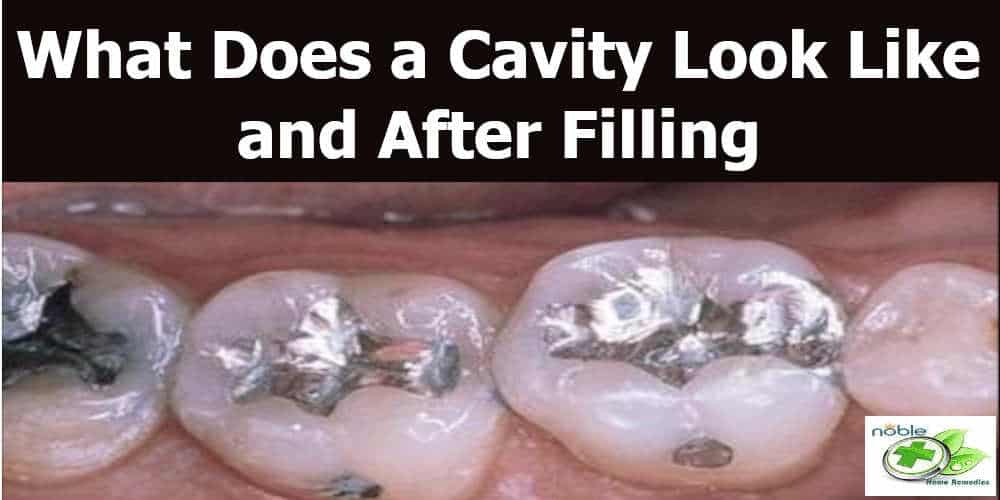Insulin Injection Sites – Learn how to Inject – Type1 & Type2 Diabetes
What are Insulin and Insulin Injection Sites?
Insulin is a hormone produced by a gland called the pancreas located near our stomach. The insulin injection sites are the location of the skin for the insulin delivery to our body.
Insulin has many roles to play in our body’s metabolism. Our body cells rely on insulin to get glucose (energy) from the blood. Insulin controls the sugar level in our blood and does not get too high or low. Too high sugar levels are called hyperglycemia and too low is called hypoglycemia.
Insulin is the one that informs body cells to absorb sugar from the blood. Once there is sufficient energy gathered in cells, it informs the liver to absorb the sugar from the blood and store it in the form of glycogen for future use. Except for some cells, all the other cells of our body depend on insulin to absorb sugar or energy from the blood.
If the insulin is not properly controlled by the system it causes diabetes in people.
There are two types of diabetes:-
Type1 Diabetes
In this case, the pancreas glands produce less insulin that controls the glucose or sugar level in the blood. As a result, our body cells were unable to absorb enough glucose from the blood hence cells tend to take energy from other sources.
People who are with type 1 diabetes need to take insulin due to a lack of insulin in the blood.
Type2 Diabetes
This is due to insulin resistance, where our body is not responding to insulin and therefore not absorbing glucose sufficiently from the blood. As a result pancreas glands produce more insulin in the blood.
Eventually and over the years, the insulin-producing cells of the pancreas glands slowly wear out. Based on the severity of the impact people with type 2 diabetes are required to take appropriate insulin injections dosage.
You can manage diabetes in many ways depending on the severity of the condition. These are some of the good ways to manage and control diabetes.
- Appropriate diet
- Exercise
- Meditation
- Taking of Insulin
Natural herbs for type 2 diabetes help to control manage and lower the sugar level in the blood
Those with diabetes type1 required to take insulin for life. Initially, it may look hard to do. But as time goes on, you will get used to administering the intake of insulin by yourself with the support of healthcare personnel and practice.
Here in this article, we will be covering in detail those who have to take insulin and the insulin injection sites of the body.

Insulin injection practices
You can take it in many ways using syringes, insulin pumps, jet injectors, and insulin pens. Consult your doctor to decide which method best suits you. The syringes are mostly recommended for insulin delivery for being cost-effective.
Many insurance companies provide cover for using syringes for insulin treatment for diabetes.
Let us look at briefly each of the methods of insulin delivery:-
Insulin pumps – People who opt for this method find it difficult to do insulin delivery using a syringe or pen. For this method, the pump is attached to the catheter to pump insulin into the bloodstream
Insulin Pens – This looks like a large pen. Used to assist people with poor eyesight and to ensure avoid an overdose. Insulin dosage is decided by setting the dial provided in the pen. Then inject the insulin with a pen with the disposable needle placed on top of the pen.
Jet Injectors – These are meant for people who are intolerant to injecting insulin with needles. An injector can hold several insulin doses. One has to place the injector over the skin and then push the button to make the insulin pass through the skin.
Syringes – This method of injecting insulin is highly recommended mainly because it is cost-effective. These syringes are made of plastic and are supposed to be disposed of after each usage.
Syringes vary by the amount of insulin they can hold and the size of the needle. They’re made of plastic and should be discarded after first use. Normally 12.7 mm length needle is used. However, needle sizes of 8 or 6 mm as good enough for injecting insulin. Meaning, that insulin injection will be less painful when the needle is smaller in size.
Insulin Injecting Sites

The presence of the subcutaneous in the area of the skin is what is necessary for injecting insulin. The Subcutaneous is the fat layer beneath the epidermis and dermis of the skin. The reason for injecting on the fatty layer is for slower and smoother absorption of insulin. If injected directly deeper into the muscle, the insulin gets absorbed faster.
Quicker absorption could result in lower sugar levels in the blood. Insulin injection sites should be always with the underlying fat layer.
The injecting sites with underlying fat layers are: –
Abdomen or belly
The belly is the most preferred insulin injection site of your body. This is because it is easy to reach this part of the body by any individual. The insulin also goes to the bloodstream in the right manner from the belly.
The ideal area of the belly to inject insulin is the skin between the ribs and the pubic area. Make sure the area you have picked up is more than 2 inches away from the navel. Always be sure that the skin area for injection is clear from moles, scars, skin blemishes, broken vessels, and the presence of varicose veins. This will ensure no interference in the smooth absorption of insulin into your body.
Thighs
This is another injecting site for insulin. You could use the outer thigh area between 4 inches down from the top and 4 inches above the knee to inject insulin.
Upper Arms
Choose the fatty area of your arm which is the backside of the arm below the shoulder and above the elbow.
Buttocks
Another insulin injection site to administer is the buttocks or the lower back. However, self-injecting in this area is a bit difficult.
Those who do self-injecting insulin should importantly aware of a few things: –
Always rotate the insulin injection site and should not repeat it in the same spot. Otherwise, it will lead to lipodystrophy. This means injecting in the same place many times reduces the fat or builds up fat indentations or lumps. This will affect the absorption of insulin into the body.
Make sure that the next insulin injection site is an inch apart from the previous site. By the time you come to the earlier points, it will be back to normal.
How to inject insulin
Let us cover how to inject insulin also in this article as it may be beneficial to you.
Always check the Insulin for quality and expiry date before injecting it into your body. Normally insulin is kept in the refrigerator. Once opened it lasts for 28 days and after that, it loses its effect. Always remember to keep it in the refrigerator else the expiry indicated is not valid.
Observe the appearance of the insulin in the vial. If it looks cloudy just try to mix it by rolling the vial in your palm for three to four seconds. Never shake the vial.
Do not use the insulin that has turned grainy, discolored, or gotten thickened. Wait always for insulin to get to room temperature before injecting.
Follow these steps for a safe and proper way to inject insulin: –
Preparation for Insulin Injection Sites
First, keep the following items ready with you to prepare for injecting insulin
- medication vial
- Syringes and needles
- alcohol pads
- bandages
- gauze
- A small container to dispose of used syringes and needles
- Wash your hands, fingers, between fingers, and nail gaps thoroughly to keep clear of germs and dirt. Do the gathering for about 20 seconds which is the recommendation from Disease Control and Prevention.
- Pull the plunger down keeping the syringe and needle pointing upwards. Keep pulling the plunger down till it reaches the right measurement point of your intended dose.
- Pick the insulin vial and remove the cap. If the vial is already used then make sure to wipe nicely the stopper using an alcohol swab.
- Pull the plunger to make the air draw into the syringe. Pull it to the level of the dosage of insulin you have intended to inject.
- Keep the vial on a flat surface insert the needle through the rubber stopper and push the plunger down, to let the air go into the vial. Actually, the amount of air drawn is the amount of insulin to be withdrawn from the vial.
- Having the needle inside turn the vial upside down. Pull the plunger down till it reaches the measuring point of the dosage of insulin.
Gently tap the syringe if you see any bubbles for that to move to the top. Push the plunger back a little to make the bubbles move into the vial. Once again pull the plunger down to the dosage point. Repeat till the bubbles clear from the syringe.
Injecting insulin on the site
- Keep holding the syringe in one hand and with the other hand swab the insulin injection site you have chosen with little alcohol. Let it dry for about a minute.
- Pinch and make a fold of skin of the cleaned injection site and dart syringe inserting the needle into the skin at almost 90 degrees angle.
- Push the plunger all the way down to push the insulin into the skin and release the pinch of the skin. Wait for about 10 seconds and remove the needle from the skin. Sometimes there could be little bleeding after injection. Apply light pressure on the injected area with gauze but you should not rub the skin. If necessary cover the injected area with a small bandage.
- Place the needle and the syringe inside a container to be disposed of later. Never use the needle more than once.
Disposing of used syringes and needles
Today three billion syringes and needles are being used and disposed of as per the Environmental Protection Agency.
Disposing of the used syringes and needles is important to avoid posing risk to many others. The Coalition for Safe Community describes the regulations set state by state. The regulation differs from state to state.
Actually, controlling diabetes is practical and today so many people are leading a life with it. The only thing is you need to know the dosage and how to inject insulin and the insulin injection sites. Train yourself just once or twice by your doctor or at a medical clinic then you will be more comfortable doing insulin injections.
Trust in your purchase:
Every product featured on our site has been carefully researched and selected based on quality, customer ratings, and positive reviews to ensure you receive excellent value for your money.
Please note:
This post contains affiliate links. If you make a purchase through these links, we may earn a small commission at no additional cost to you. This helps support our site and allows us to continue bringing you valuable content. Thank you!
Thank you for your precious time spent with NobleHomeRemedies.
You may also like:
Benefits of Exercising
Incredible Benefits of Exercising: Supercharge Your Life Life can get pretty busy, can’t it? Between…
What Does a Cavity Look Like
What Does a Cavity Look Like – 10 Best Prevention Efforts Cavities in their beginning…
Black Mold on Window Sills: Removal and Prevention
Black Mold on Window Sills: Removal and Prevention Have you ever noticed the black mold…
How to Lower Cholesterol Naturally
How to Lower Cholesterol Naturally No Medication Required Cholesterol is a type of lipid molecule…
Gastroparesis Shakes, Smoothies, Soups Recipes
27 Best Gastroparesis Meal Replacement Shakes, Smoothies and Soups In this article, we are covering…
High Casein Foods
High Casein Foods | The Top 5 Foods with Protein Casein Most people are familiar…






